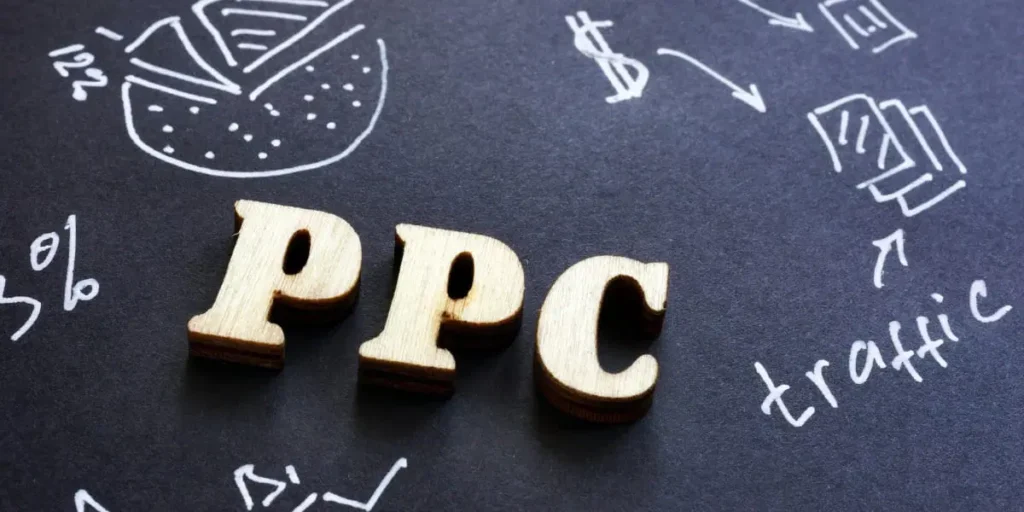PPC (Pay-Per-Click) advertising is one of the most powerful digital marketing tools businesses use to generate immediate traffic, leads, and conversions. Unlike organic SEO which takes time to gain traction, PPC delivers faster results by placing your ads in prominent positions on search engines, social media platforms, and other ad networks. With platforms like Google Ads, Bing Ads, Facebook, Instagram, and LinkedIn offering detailed targeting capabilities, advertisers can reach audiences based on demographics, interests, behavior, and even the device they’re using. PPC offers complete budget control, measurable performance, and scalable growth potential, making it a favorite among marketers across industries. Its value is particularly evident in competitive sectors where organic visibility alone isn’t enough to drive the desired business outcomes. The challenge, however, lies not in running a PPC campaign but in crafting a strategic one that drives ROI. To win in this space, businesses must adopt smart and well-researched ppc advertising strategies that align with user intent, platform strengths, and clear conversion paths.
Target Audience Definition
One of the most critical foundations for a successful PPC campaign is defining the target audience with precision. Without a clear understanding of who your audience is, you risk spending money on clicks that will never convert. A strong audience definition goes beyond surface-level demographics. It includes understanding the buyer’s persona, their pain points, their decision-making process, and their online behavior. Platforms like Google and Facebook provide advanced tools to filter users based on gender, age, income, interests, purchase behavior, and location. For B2B campaigns, targeting can get even more specific, such as job titles, industries, and company sizes. One of the advanced ppc advertising strategies involves creating multiple audience segments and tailoring ad copy and landing pages to each. This increases relevancy and engagement while reducing bounce rates. Additionally, using remarketing lists or lookalike audiences can help reconnect with visitors who already showed interest, increasing the likelihood of conversion.
Keyword Research and User Intent
At the core of every effective PPC campaign lies thorough and intent-driven keyword research. Keywords determine which searches trigger your ads, and they dictate the cost and competitiveness of your campaigns. However, effective keyword research is not just about finding high-volume search terms—it’s about understanding the user’s intent behind those searches. There are generally three types of search intent: informational, navigational, and transactional. For PPC campaigns focused on conversion, transactional and commercial-intent keywords are the most valuable. These keywords often include phrases like “buy,” “discount,” “services near me,” or “hire.” Long-tail keywords, while having lower search volume, tend to carry stronger purchase intent and face less competition, making them a core component of many successful ppc advertising strategies. Tools like Google Keyword Planner, Ubersuggest, Ahrefs, and SEMrush can uncover opportunities others might miss. Grouping keywords into tightly themed ad groups also improves Quality Scores, which leads to lower CPCs and better ad placement.
Creating Compelling and High-Converting Ad Copy
Your ad copy is your digital elevator pitch—it must be concise, persuasive, and relevant. Since users often scan ads quickly, your copy must grab attention in seconds and provide a clear reason for them to click. Use strong headlines that include your primary keywords and focus on a specific benefit or value proposition. Highlight what sets your offering apart—free shipping, limited-time offers, exclusive deals, or superior quality. Including emotional triggers such as urgency (“limited stock”), social proof (“trusted by thousands”), or exclusivity (“members only”) can also increase click-through rates. Another key element is the call to action (CTA), which should tell users exactly what to do next—“Buy Now,” “Get a Free Quote,” or “Schedule a Demo.” Consistently testing different headlines, descriptions, and CTAs allows advertisers to fine-tune their messaging. In modern ppc advertising strategies, responsive search ads that automatically test multiple versions of ad copy and serve the best-performing combinations are also widely used for performance optimization.
Landing Page Optimization for Maximum ROI
Driving users to a landing page is only effective if that page is optimized to convert visitors into customers or leads. There must be a strong connection between your ad and the landing page it leads to. Users expect to find exactly what was promised in the ad—if the experience doesn’t align, they will bounce. A good landing page is simple, visually appealing, and laser-focused on a single conversion goal. It should have a clear headline, persuasive subheadings, compelling visuals, and a noticeable CTA. Forms should be short and easy to fill out, and trust signals like testimonials, guarantees, and secure payment icons should be present. Mobile responsiveness and fast loading speeds are also critical, as many users will visit from their smartphones. One of the most overlooked but highly effective ppc advertising strategies is using dynamic landing pages that adapt content based on the keyword or ad that brought the user there, increasing relevance and conversion rates significantly.
Implementing Negative Keywords Strategically

Negative keywords are a secret weapon for eliminating irrelevant traffic and maximizing the value of every click. When you add a negative keyword to your campaign, your ads will not show for searches containing that term. This helps prevent your budget from being wasted on unqualified leads. For instance, a company selling high-end watches may want to exclude terms like “cheap,” “free,” or “DIY.” Regularly reviewing search term reports allows you to discover unwanted queries triggering your ads. Adding those as negative keywords tightens your campaign focus and improves ad relevance. Implementing this tactic is one of the more technical but critical ppc advertising strategies, especially in large-scale campaigns where the volume of search variations can quickly dilute effectiveness. It also improves Quality Scores by increasing CTR and reducing bounce rates, leading to better positioning at lower costs.
Bidding Strategy and Budget Management
Bidding is a core element of PPC success, directly influencing how often and where your ads appear. There are various bidding strategies to choose from, including manual CPC (cost-per-click), enhanced CPC, target CPA (cost-per-acquisition), target ROAS (return on ad spend), and maximize conversions. Each has its benefits depending on your campaign goals. For tight budget control, manual bidding is a good start, allowing you to set maximum bids for each keyword. As you collect data, automated strategies driven by machine learning can be more effective in achieving specific performance goals. One of the more advanced ppc advertising strategies involves allocating budget based on funnel stage—brand awareness campaigns may need broader reach at a lower CPC, while bottom-funnel campaigns can afford higher bids due to higher conversion likelihood. Monitoring budget distribution across campaigns and devices also ensures efficiency and helps reduce wasteful spend.
A/B Testing for Continuous Optimization
Running a PPC campaign without testing is like flying blind. A/B testing allows you to compare different versions of ads, headlines, landing pages, or CTAs to see what performs best. By changing just one element at a time, such as using different headlines or trying out varied CTA phrasing, you can identify what resonates most with your target audience. Testing should be ongoing, as consumer behavior and market conditions change frequently. For example, seasonality may affect which ad copy works better, or a competitor’s new offer might change what appeals to users. Platforms like Google Ads even allow automated ad testing with responsive search ads, helping improve campaign performance over time. Incorporating testing into your ppc advertising strategies ensures that decisions are driven by data, not guesswork, and that you’re continuously optimizing for better results.
Retargeting and Remarketing for Higher Conversions
Many users don’t convert on their first visit—and that’s okay. Retargeting (or remarketing) allows you to stay in front of users who previously visited your website but left without taking action. These campaigns show personalized ads as users browse other sites, scroll social media, or watch videos online. The power of retargeting lies in repetition and relevance—it reminds users of what they were interested in and nudges them toward conversion. You can segment retargeting audiences by behavior, such as viewed a product, added to cart, or visited a pricing page. Personalized messages that reflect these actions significantly boost conversion rates. One of the most ROI-driven ppc advertising strategies is combining retargeting with time-based urgency—for example, “Only 24 hours left to claim your discount.” Remarketing lists for search ads (RLSA) even allow you to customize search ads specifically for previous visitors, offering another layer of personalization.
Tracking Performance and Campaign Analytics
Monitoring performance metrics is essential to understanding what’s working and what’s not in your PPC campaigns. Metrics such as CTR (click-through rate), CPC (cost per click), conversion rate, bounce rate, and ROAS (return on ad spend) provide valuable insights into user behavior and campaign efficiency. Tools like Google Ads dashboard, Google Analytics, and heatmaps give marketers a detailed view of how visitors interact with ads and landing pages. A key aspect of performance analysis is attribution—understanding which ads and keywords contributed most to conversions. Using conversion tracking pixels and integrating CRM data can help connect the dots between a click and a sale. Advanced ppc advertising strategies use this data not only for reporting but also to inform future campaign decisions, such as adjusting bids, refining targeting, or reallocating budgets. Regular analysis and optimization cycles are what separate average campaigns from high-performing ones.
Diversifying Across PPC Platforms
While Google Ads remains the leader in PPC advertising, diversifying across other platforms like Facebook, Instagram, LinkedIn, TikTok, and Bing can offer significant advantages. Each platform has unique user behavior, demographics, and ad formats that cater to different types of businesses and marketing goals. For example, B2B brands may find more success on LinkedIn, while visual eCommerce products thrive on Instagram. Facebook’s advanced targeting capabilities allow advertisers to reach users based on lifestyle and interests. Testing different platforms helps uncover new opportunities and reduces reliance on a single traffic source. One of the more strategic ppc advertising strategies is to run simultaneous campaigns across multiple platforms, compare performance, and scale the ones with the best ROI. Diversification not only increases reach but also protects your business from sudden changes in platform algorithms or ad policies.
Conclusion
Mastering PPC advertising requires more than just setting up ads and bidding on keywords—it demands a strategic and data-driven approach across all campaign elements. From understanding your audience and selecting high-intent keywords to crafting compelling ad copy and optimizing landing pages, every step must align to a clear conversion path. Incorporating smart practices like negative keyword usage, bid management, retargeting, and multichannel testing enhances performance and drives sustainable results. The most effective ppc advertising strategies are those that adapt to data insights, user behavior, and evolving platform capabilities. When executed well, PPC becomes a high-impact tool that not only boosts traffic but also increases sales, leads, and long-term brand visibility.
















